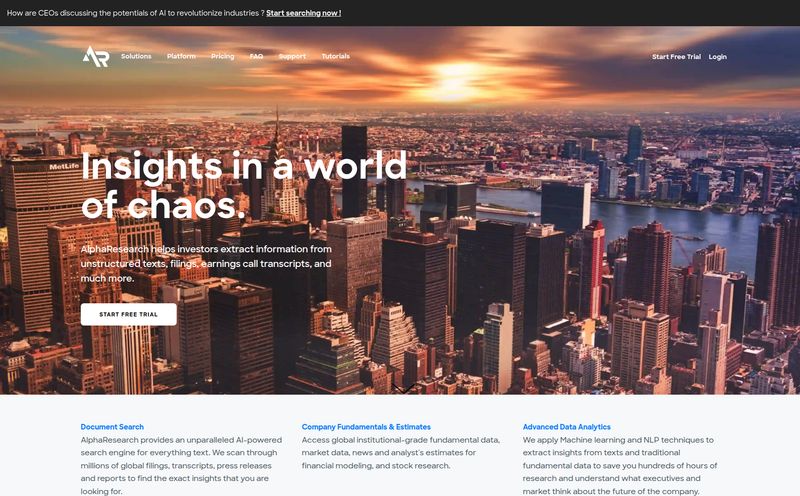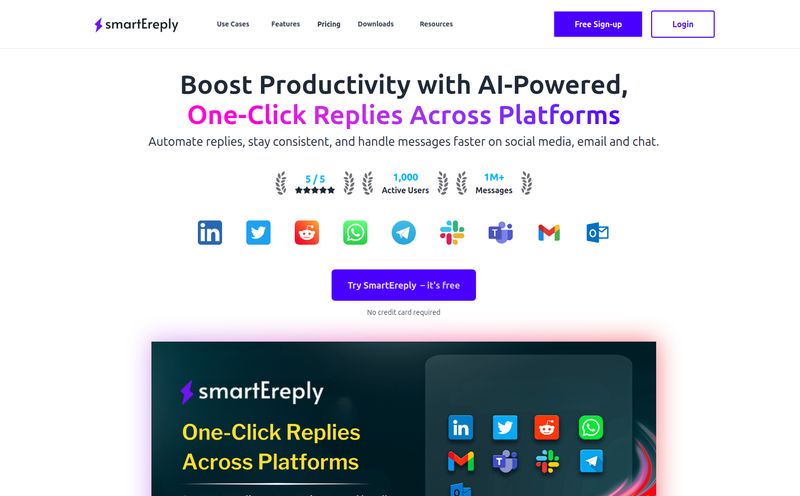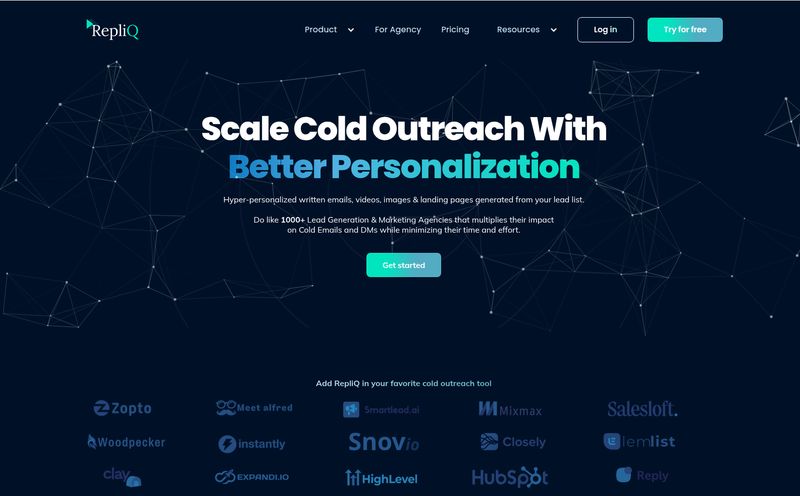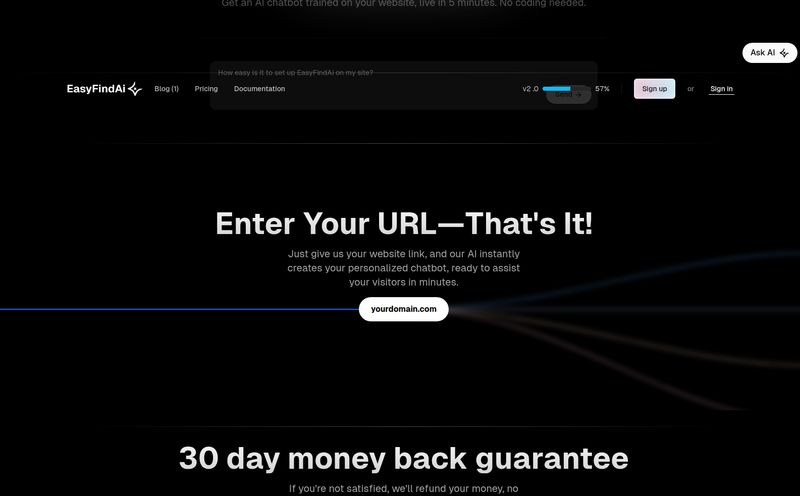How much of your Monday morning is spent in a frantic, coffee-fueled scramble, trying to figure out what your competitors did over the weekend? You’ve got a dozen tabs open: their blog, their social media, LinkedIn, maybe a press release site... It's a mess. We’ve all been there. It feels like you're a detective in a low-budget noir film, hunting for clues in a city that never sleeps.
For years, my go-to was a complex web of Google Alerts and saved searches. The result? An inbox flooded with 90% noise and 10% signal. It was a digital firehose pointed directly at my face. I was drowning in data but starved for actual intelligence. So, when I first heard about RivalSense, I was intrigued but, honestly, a little skeptical. Another AI tool promising to solve all my problems? Sure. But I gave it a shot, and I’m glad I did.
So, What Exactly is RivalSense?
Think of RivalSense as an analyst you’ve hired to keep tabs on the competition. Except this analyst is an AI that works 24/7, never sleeps, and reads everything. It’s a competitive intelligence tool designed for folks like us—founders, CEOs, marketers—who don't have time to sift through mountains of irrelevant information. The core idea is simple: you tell it which companies to watch, and it sends you a single, curated email or Slack message each week with the important stuff. No fluff, no filler.
Cutting Through the Noise: How It Actually Works
The process isn't some black-box magic; it's surprisingly straightforward. First, you just plug in the websites of the companies you want to monitor. This could be direct competitors, key accounts you’re trying to land, or even your most important suppliers. Then, you can fine-tune what you care about. Are you obsessed with their product updates? Or maybe you're more interested in their hiring trends and new market expansions? You can pick and choose.
Once you’ve done that, the RivalSense AI gets to work. It connects to over 80 different data sources. We're talking company websites, employee social media, news sites, job boards, industry blogs, market reports, and a whole lot more. It’s like having a subscription to every relevant publication and a backstage pass to your rival's office chatter. Every day, it scans for changes and interesting developments.
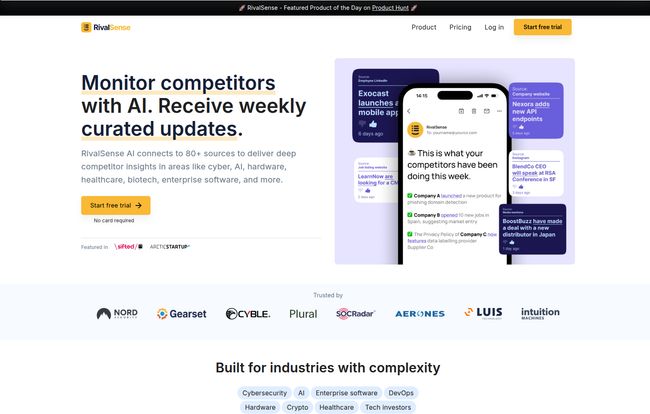
Visit RivalSense
The Weekly Briefing That Doesn't Suck
Here’s the part that really sold me. At the end of the week, you don’t get a raw data dump. You get a clean, readable summary. “Company A launched a new product.” “Company B just hired a new VP of Sales from a major player.” “Company C got mentioned in a new regulatory filing.” These are the golden nuggets of competitive analysis that can spark new ideas or warn you of an impending threat. It’s all delivered right to your inbox or a dedicated Slack channel, making it easy to share with your team.
My Experience: The Good, The Bad, and The AI
Alright, let's get into the nitty-gritty. No tool is perfect, but RivalSense gets a lot of things right. And there are a couple things to be aware of before you jump in.
The Things I Absolutely Adore
The biggest win for me is the time saved. That chaotic Monday morning routine? Gone. I now spend about 10 minutes reading a single, well-organized email. The value of getting those hours back every week is, frankly, huge. I also love the breadth of its sources. It catches things I would never find on my own, like a key employee update on LinkedIn or a subtle pricing page change that wasn't announced. It’s like having eyes and ears everywhere. It turns raw data into something you can actually use to make decisions, which is the whole point of market intelligence, isn't it?
A Few Things to Keep in Mind
Now for the reality check. First off, this isn't a free tool. There's a free trial (no card required, which is nice), but to get the long-term benefit, you'll need a paid subscription. Also, the effectiveness of the tool hinges on the AI's ability to identify what's truly relevant. For the most part, it's spookily accurate, but you might need to spend a little time upfront fine-tuning your monitored topics to get the signal just right. Don't expect to just plug in a URL and have it read your mind perfectly from day one. It’s a powerful machine, but it still needs a smart driver.
Who Is This Tool Really For?
While anyone could find it useful, RivalSense really sings for a few key roles:
- Founders & CEOs: For staying on top of the market landscape, spotting M&A opportunities, and understanding the strategic moves of your biggest rivals without getting bogged down in the details.
- Product Managers: To track competitor product launches, feature updates, and shifts in their offering. The testimonial from Xenia at Planable in the image really nails this—getting unexpected insights that feed directly back into your own product roadmap.
- Sales & Marketing Teams: To identify new partnership channels, notice when a competitor loses a client, and craft messaging that directly addresses their weaknesses or your strengths.
Let's Talk Money: The RivalSense Pricing Structure
So what's the damage? The pricing is tiered, which makes sense for businesses of different sizes. I've broken down their main plans here based on the latest info.
| Plan | Price | Best For |
|---|---|---|
| Basic | $44.99 /mo (starts at 4 companies) | Solopreneurs or small startups just getting started with competitor tracking. |
| Pro | $104.99 /mo (starts at 10 companies) | Growing businesses and teams that need to share insights with a few key people (up to 5 recipients). |
| Business | $222.99 /mo (starts at 20 companies) | Larger organizations that need to distribute intelligence across the entire company (unlimited recipients). |
Note: Each plan has a per-company cost if you want to add more than teh starting amount, and the per-company cost gets cheaper as you move up the tiers.
The Final Verdict: Is RivalSense Worth the Investment?
Here’s my take. In the worlds of SEO, traffic, and business growth, information is currency. But raw information is like unmined ore—heavy, messy, and mostly worthless until it's refined. The cost of being blindsided by a competitor's move is far higher than the monthly fee for a tool like this. RivalSense acts as your refinery.
If you're a founder or manager who currently spends hours every week on manual competitive research, or worse, doesn't do it at all because you don't have the time, then yes. I believe it's absolutely worth it. The value isn't just in the information it provides, but in the time and mental energy it frees up, allowing you to focus on building your own business instead of just watching everyone else's.
Frequently Asked Questions
- What is RivalSense in a nutshell?
- It's an AI-powered service that monitors your competitors across 80+ online sources and sends you a simple, curated weekly summary of their most important activities.
- How is this different from setting up Google Alerts?
- While Google Alerts tracks keyword mentions, RivalSense is designed for deep company intelligence. It understands context, like product launches, pricing changes, and new hires, and scans sources Google Alerts doesn't cover, like specific job boards or social media profiles. It delivers a curated digest, not a constant stream of notifications.
- What kind of companies can I monitor?
- You can monitor pretty much any company with an online presence. It works well for software, healthcare, biotech, enterprise, and more. You can track public companies, private startups, partners, or even key customers.
- Is there a free trial?
- Yes, they offer a free trial, and the best part is it doesn't require a credit card. So you can test it out completely risk-free to see if the insights are valuable for you.
- Can I integrate RivalSense with my team's workflow?
- Yes. Besides the standard weekly email, it has a native Slack integration, so you can have the updates sent directly to a specific channel for your team to discuss.
Final Thoughts
Keeping an eye on the competition is a fundamental part of business strategy, but it shouldn’t be a full-time job. Tools like RivalSense are a great example of how AI can be practically applied to give us back our most valuable resource: time. It's about working smarter, not harder, and in today's fast-moving market, that’s not just a nice-to-have; it’s a necessity.
